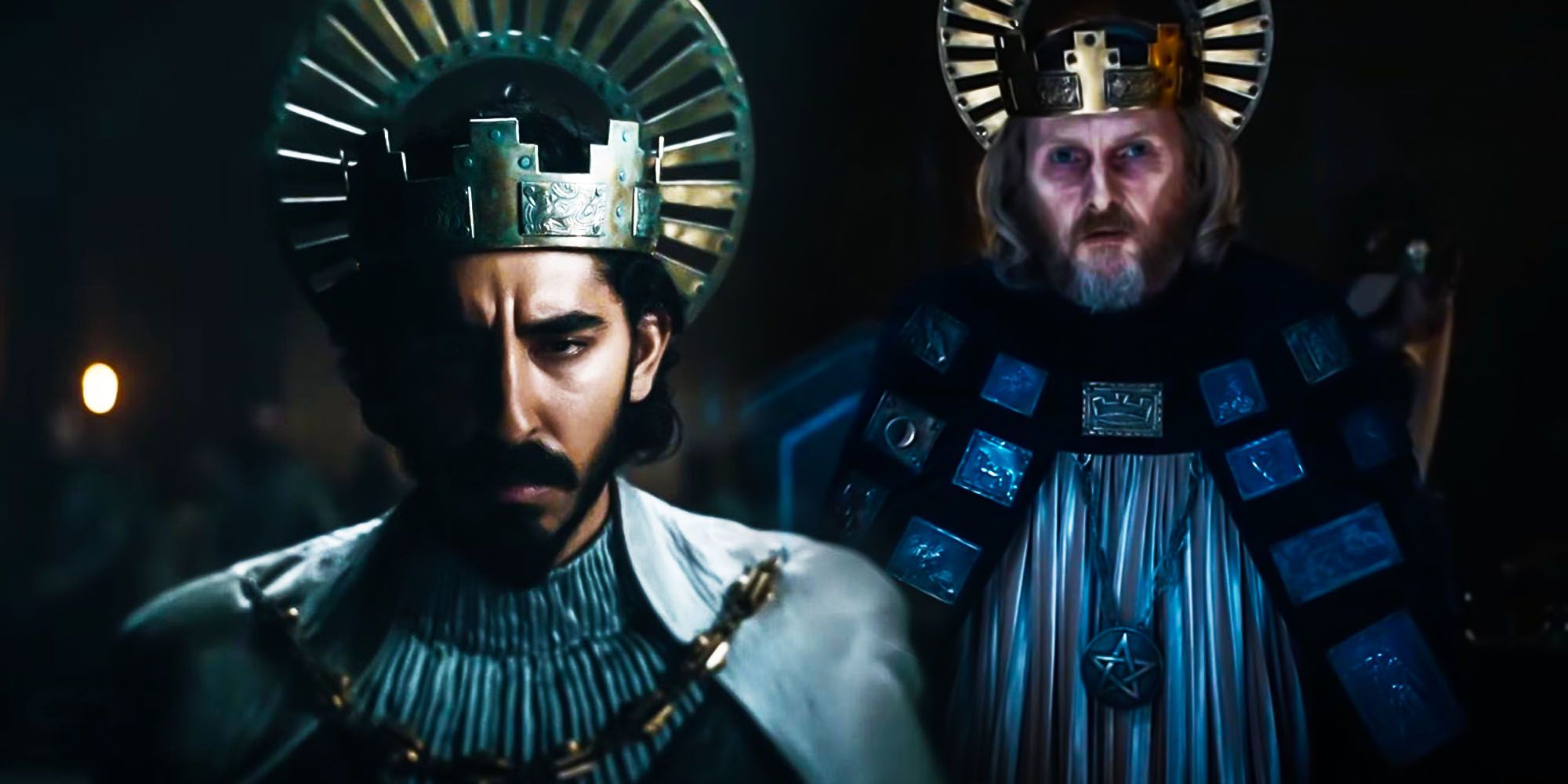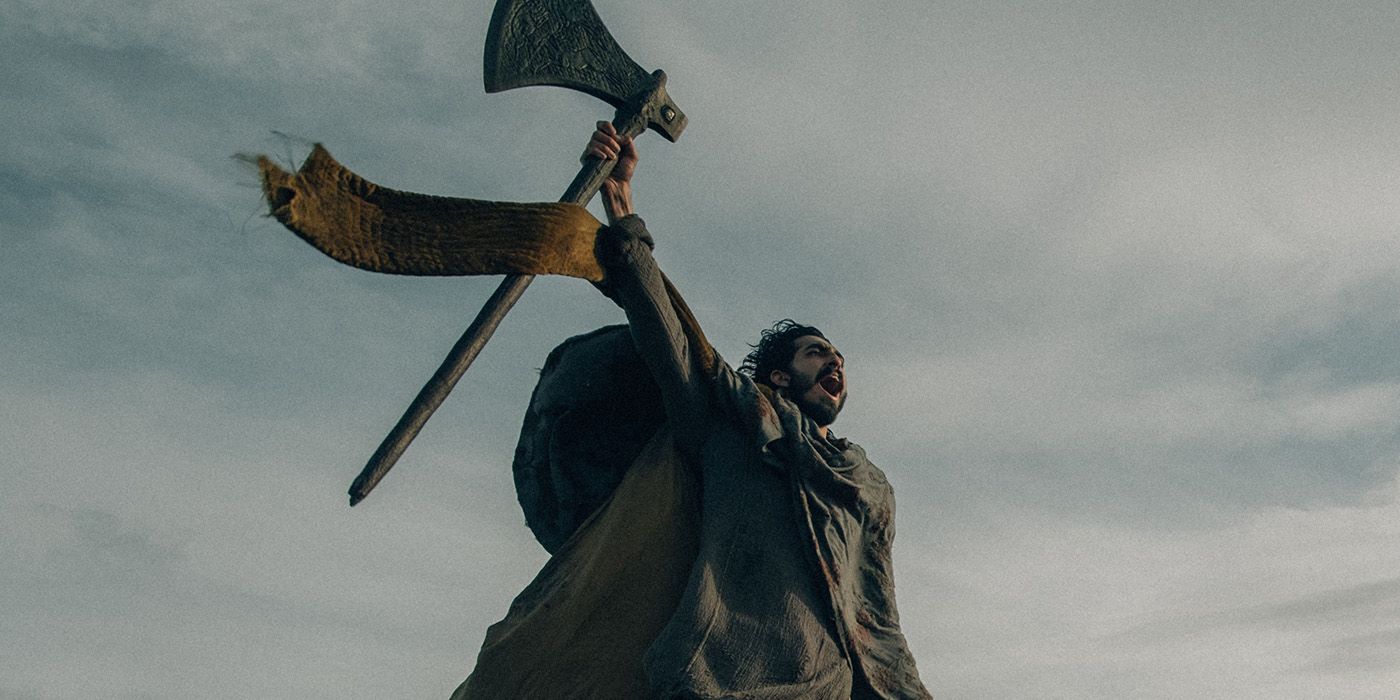David Lowery’s The Green Knight is faithful to its source material by including various instances of the number five, an important integer in medieval number theory for its mystical and religious significance. Based on the poem "Sir Gawain and The Green Knight," it tells the story of King Arthur’s nephew Gawain (Dev Patel), who accepts a challenge proposed by a mysterious Green Knight, which catalyzes a year-long journey of self-discovery. Unlike other modern King Arthur movies that emphasize the knight's physical prowess in combat, Gawain is tested more on his moral character and ability to uphold the chivalric code, a concept that is reinforced in the film through medieval symbolism.
Throughout the original "Sir Gawain and the Green Knight," the anonymous poet exhibits an obsession with the number five, both through the structure of the poem itself and within the story. In the Middle Ages, medieval number theory was widely embraced as a way of mimicking the divine geometry implemented by God during the creation of the universe. Lowery appears to continue the poet’s fascination with the integer by featuring the number five in multiple scenes of The Green Knight, such as opening the film with five geese grazing in a courtyard and illuminating five lights after Gawain’s mother Morgan Le Fay (Sarita Choudhury) finishes summoning the eponymous Green Knight. One of the main ways in which the number five appears in The Green Knight, however, is through the pentacle or “pentangle," a medieval symbol connected to the number five; interestingly, the first appearance of the word "pentangle" in English was in "Sir Gawain and the Green Knight."
In the first act of The Green Knight, the pentacle adorns King Arthur’s chain, Sir Gawain’s shield, and appears on the floor encircled by King Arthur’s Round Table. The pentacle consists of five points connected by five lines, and the anonymous poet of "Sir Gawain and The Green Knight" posits that each point represents five different groups of characteristics that Gawain needs to complete his quest, each group consisting of five parts: the five senses, five fingers, five joys of Mother Mary, five wounds of Christ, and five virtues of knighthood. Since the sum exemplifies the ultimate chivalric hero, The Green Knight's Guinevere blesses Gawain with these attributes as he prepares for his quest to the Green Chapel. By displaying the emblem on his shield, the pentacle acts as a reminder of the chivalric code. Since Gawain’s greatest test involves upholding the morals expected of a knight rather than any physical contest, the pentacle represents the ideal knight that Gawain is striving to become.
Not only is the pentacle a reminder for Gawain, but the pentagram was also viewed as a magical symbol of protection during the Middle Ages and, therefore, doubles as a talisman. According to the unnamed poet, the pentagram, or "pentangle," was designed by King Solomon as a magic emblem. Both in Lowery’s film and the original poem of the Green Knight, the pentagram is connected to the items that protect Gawain from harm, namely his shield and the green girdle. The pentagram is often regarded as an endless knot by the way the lines connect all five points of the star. Just as Gawain’s shield (which bore the pentacle) physically protected him in battle, the green girdle Gawain accepts from Bertilak's wife magically kept Gawain from being struck down as long as it was tied in a knot around his waist.
The pentacle is also displayed most often at the beginning of The Green Knight, possibly to have the symbol further reflect Gawain’s introspective journey. Since the pentacle represents the ideal knight, the symbol appears earlier on in the film when Gawain’s ideals of knighthood are still pure and haven’t yet been corrupted by the challenges Gawain faces traveling to the Green Knight's chapel. Both in the poem and Lowery's film, Gawain bears the pentangle on the face of the shield and the image of the Mother Mary on the back to remind him to act virtuously. After Gawain’s shield is broken by the thieves in the woods, it marks the moment in The Green Knight when Gawain begins to lose his way, because he no longer has his moral roadmap and his idea of the quintessential knight is shattered by reality. Just as the pentacle and its five points are symbolically broken, so, too, is Gawain's confidence in his own safety and certainty in his quest.


